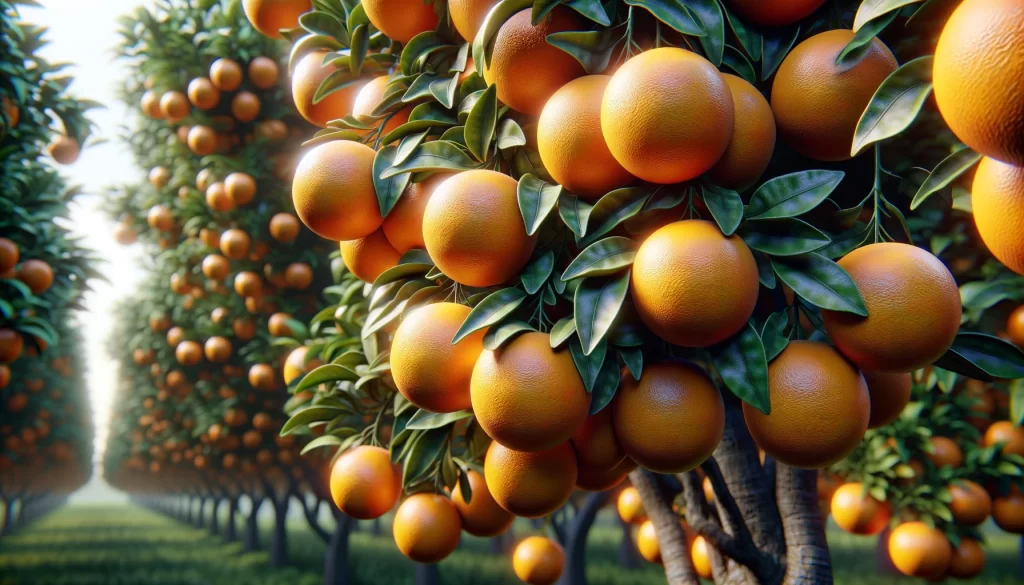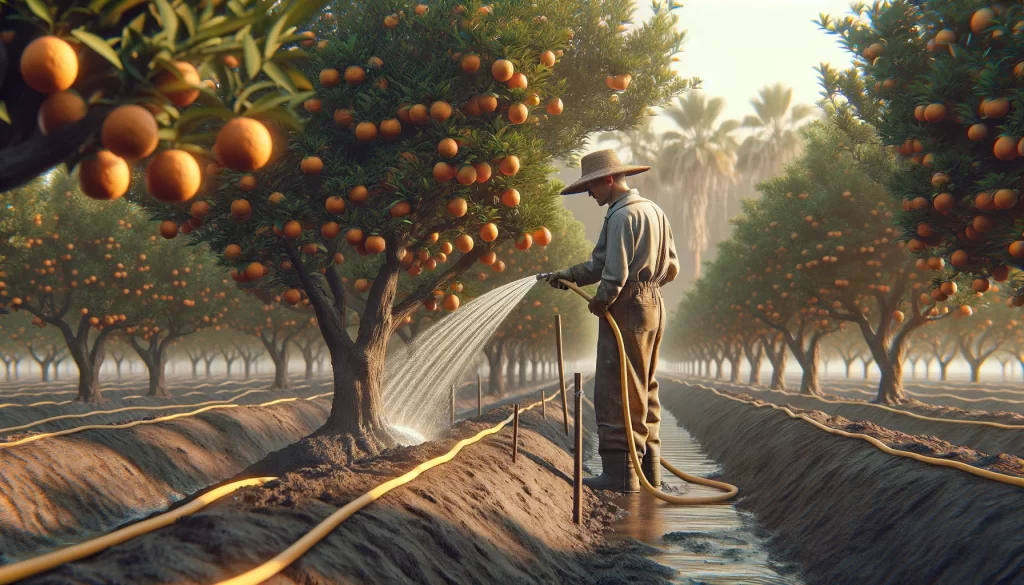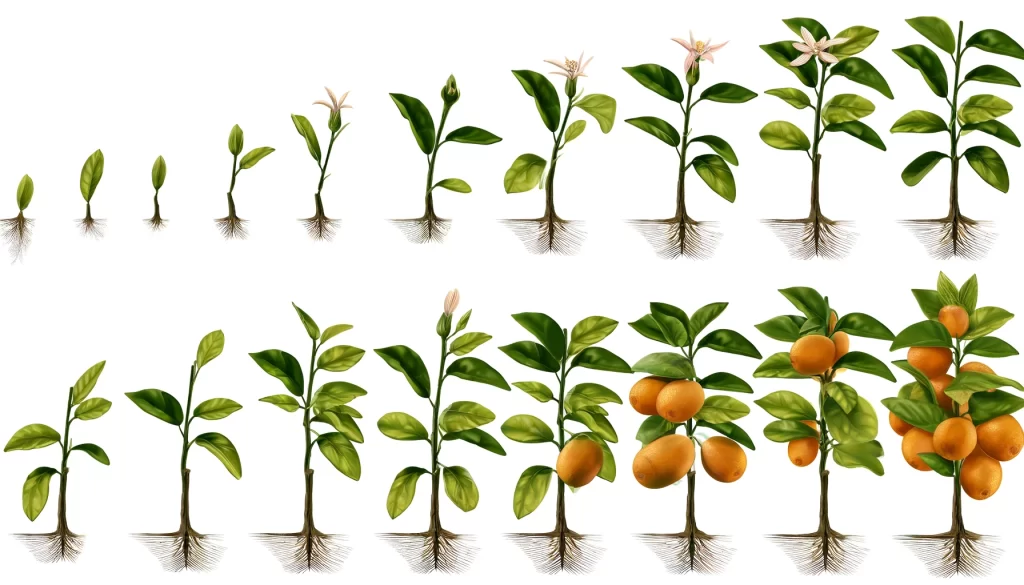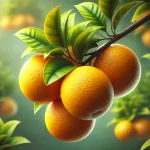The orange or Citrus × sinensis is the fruit of the sweet orange tree (Citrus sinensis), a tree in the Rutaceae family. It is an evergreen perennial tree that can grow up to a height of 5 to 10 meters. The leaves are oval, glossy, and dark green.

Fruit
The orange is a hesperidium berry, which means it has a thick, porous rind, known as the “peel,” that contains essential oils. The internal pulp is fleshy, juicy, and composed of numerous juice-filled segments, called “wedges.” These wedges are enclosed by white membranes called “albedo.” The pulp can vary in color from yellow to orange, depending on the variety and degree of ripeness.
Orange Varieties
There is a wide variety of orange cultivars grown worldwide, each with unique characteristics in terms of flavor, size, color, and use. Some of the most well-known varieties include:
- Valencia Orange: It is one of the most common and widely cultivated varieties. It has a bright orange peel and juicy pulp, being popular for both fresh consumption and juice.
- Navel Orange: Characterized by a protrusion at the base resembling a navel, hence its name. They are very sweet and easy to peel, making them popular as table fruit.
- Jaffa Orange: Originating from Israel, it is known for its sweet flavor and easy-to-peel rind. They are popular for fresh consumption and juicing.
- Washington Orange (or Navelina): Similar to the Navel orange but earlier in its harvest season. It has a sweet flavor and an easy-to-peel rind.
- Hamlin Orange: An early-season variety with a thin and easy-to-peel rind. It is primarily used for juice production.
- Seville Orange (or Bitter Orange): Unlike other varieties, Seville oranges are bitter and mainly used for making marmalades and as an ingredient in cooking.
- Blood Orange: Characterized by its red or purple pulp, which gives it its name. They are popular as table fruit and for juicing due to their attractive color and distinctive flavor.
These are just a few of the many orange varieties grown in different parts of the world, each with its own specific characteristics and uses.

Climate and Soil
The orange is a subtropical fruit that requires a warm climate to grow properly. It prefers average temperatures between 15-30°C (59-86°F) and needs a cooling period during winter for good flowering and fruit set. Regarding soil, it prefers well-drained and slightly acidic soils.
Water Requirements
The orange is moderately drought-resistant but requires a regular supply of water, especially during flowering, fruit set, and fruit growth.

Life Cycle
The life cycle of the orange begins with seed germination, followed by tree growth, flowering, pollination, fruit set, fruit growth and maturation, and finally harvesting.
Uses
Oranges are mainly consumed fresh as table fruit, but they are also used to make juices, marmalades, desserts, salads, and as an ingredient in a wide variety of culinary dishes. Additionally, the essential oils from the peel are used in the food and fragrance industries.

Economic Importance
The orange is one of the most important fruits globally in terms of production and trade. The main producers include Brazil, the United States, China, India, and Spain. The orange industry generates billions of dollars in revenue each year and provides employment to millions of people worldwide.
Phenological Stages
The phenological stages of the orange can vary slightly depending on the variety and specific growing conditions, but they generally include the following:
- Bud Break: Begins with the development of new shoots on the orange plant.
- Flowering: This stage marks the start of flower formation on the plant. Orange blossoms are typically white and fragrant.
- Fruit Set: After pollination, the ovaries of the fertilized flowers begin to develop and form the fruits.
- Fruit Growth: The orange fruits begin to increase in size and develop their characteristic color.
- Maturation: During this stage, the fruits continue to ripen, developing their final flavor, aroma, and color. The peel becomes thinner and smoother.
- Harvest: When the fruits reach their optimal maturity, they are ready to be harvested. The harvest season can vary depending on the orange variety and local conditions.

 AgronoBlog – Agriculture Blog
AgronoBlog – Agriculture Blog 
